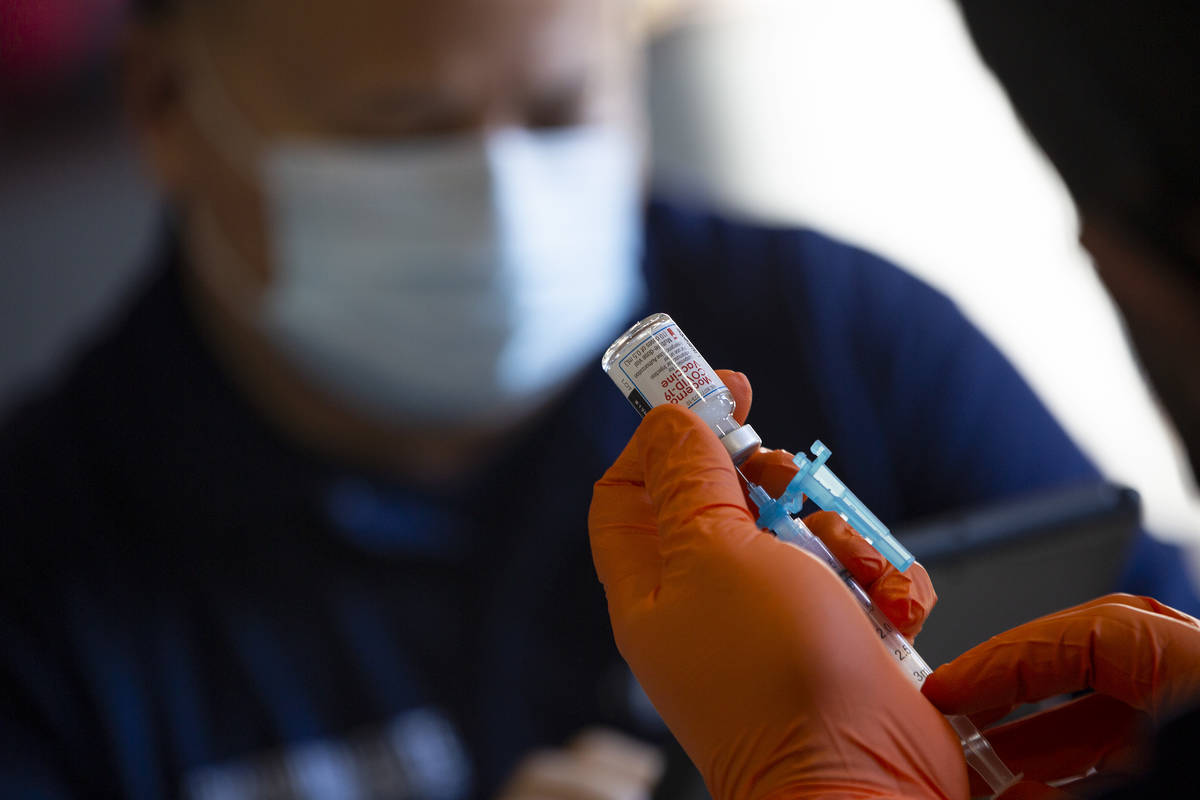The reason Nevada isn’t receiving more vaccine doses just became clear
Experts now say there’s a simple reason why Nevada’s COVID-19 vaccine allotment has seemed low for months.
Fast-growing states have been disadvantaged due to the federal government’s reliance on old population data.
Weekly vaccine allocations are proportional to each state’s estimated adult population recorded in the U.S. Census Bureau’s 2014-18 American Community Survey. The 2015-19 estimates show Nevada with a 1.9 percent larger adult population, one of the biggest increases in the nation.
“We get a smaller share of the vaccines compared to what we should have because we’re using kind of older data, and Nevada has grown since then,” UNLV epidemiologist Brian Labus said. “The farther back you look, the greater the gap is going to be.”
White House COVID-19 response coordinator Jeff Zients said Monday the allocation method will continue as the Johnson & Johnson vaccine comes online.
“If a state represents 2 percent of the U.S. population, it receives 2 percent of the Pzifer allocation, 2 percent of the Moderna allocation, and will now receive 2 percent of the J & J allocation that is made to states tribes and territories,” he said.
However, Nevada officials have said for weeks that the math doesn’t seem to be adding up. A Review-Journal analysis based on more recent estimates and published in late January found that the state appeared to be allocated doses at a rate lower than most other states.
State officials said last week they had learned vaccine allocations are based on the 2014-18 estimates. A White House official involved with the nation’s vaccine rollout later confirmed that to the Review-Journal.
“While that is a model that’s applied nationwide, we still believe that there’s plenty of room to continue to pursue this question with our federal partners to determine exactly why and how Nevada is ending up where we are on the list,” Nevada COVID-19 Response Director Caleb Cage said.
Using the 2014-18 estimates, Nevada’s vaccine allocation rate falls in the middle of the pack among the states.
The Census Bureau released the 2015-19 estimates in early December. Comparing the two datasets, Nevada’s adult population grew more than double the nationwide average.
Having a larger share of the nation’s adult population means getting a larger vaccine allocation, said Julie Swann, a North Carolina State University analytics and systems expert who advised the Centers for Disease Control and Prevention during the swine flu pandemic response.
“It at least raises the question over whether the allocation should be done on more recent numbers,” she said. “The vaccine is in extremely limited supply, and using the more recent numbers would result in more vaccine for your population.”
There are also single-year ACS population estimates, which showed Nevada’s adult resident growth more than tripled the national average between 2018 and 2019. If those were used, the Silver State would get an even larger share of the nation’s vaccine doses.
The White House official said the five-year estimates were likely used because they are more reliable than single-year estimates. The official added that the 2015-2019 estimates were not yet published when former President Donald Trump’s administration started planning how vaccine doses would be allocated.
President Joe Biden’s administration has so-far continued allocating doses the same way, but the official added that changing the population estimates used was an “active point of discussion.”
“I think we are certainly wanting to balance using the best numbers, the most recent numbers,” the official said. “I would expect that there will be a change at some point.”
[ Who is eligible now for the vaccine in Nevada? ]
It’s unclear if that change will come in time to make a palpable difference in Nevada. President Biden on Tuesday said the U.S. will have enough vaccine supply for all adult residents by the end of May.
“At some point we will have enough vaccine,” Swann said. “At that point it ceases to matter, but it does matter for the first three to five months of the rollout.”
If Nevada and other fast-growing states receive a larger share of the nation’s vaccine, Labus said it will inevitably lead to other states getting less.
“It really doesn’t solve the problem, it just kind of moves it around to another state,” he said.
Contact Michael Scott Davidson at sdavidson@reviewjournal.com or 702-477-3861. Follow @davidsonlvrj on Twitter.
Review-Journal staff writer Debra J. Saunders contributed to this report.











































